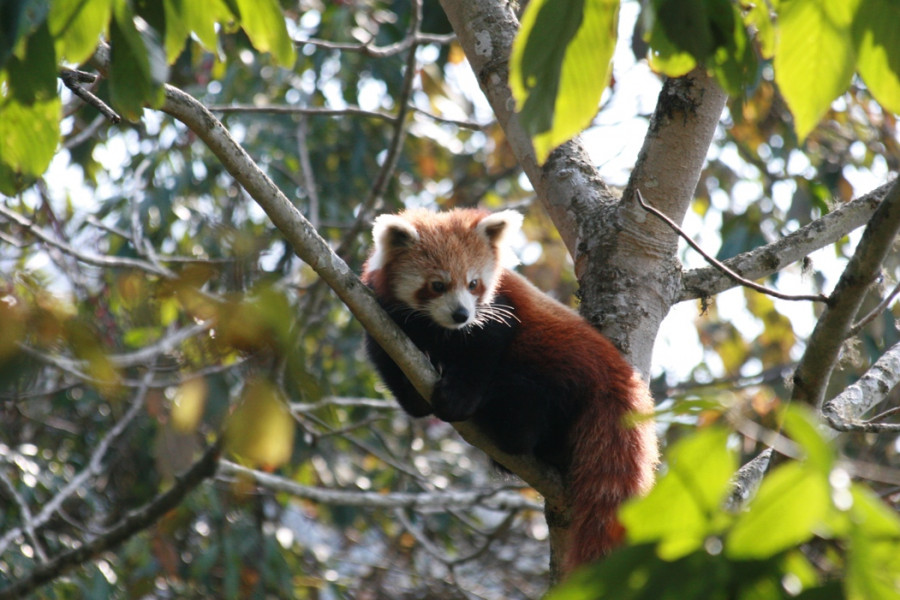
Twenty-five percent of an estimated 500 red pandas in Nepal are found in three eastern hill districts of Taplejung, Panchthar and Ilam, according to the Red Panda Network. Photo courtesy: Himali Conservation Forum
Fourteen community forests in Taplejung district have put a temporary ban on human entry into forest areas. The restriction, aimed to protect the endangered red pandas, came into effect in mid-July and will continue till mid-September.
The breeding season for red pandas, locally known as ‘Habre’, begins at the end of May and lasts until the end of July. The mortality rate of red panda cubs tends to be high in the following months, until mid-September.
People in the district visit community forests to fetch firewood and fodder for cattle, and also to graze their livestock.
Conservationists say if the mother panda finds her habitat touched by humans, she tends to move base with her cubs. This frequent change of location is not suitable for new cubs leading to their deaths in some cases.
Krikya Sherpa, chairman of Deurali Inner Community Forest located at Pathibhara region, says controlling human movement inside the forest area ensures panda cubs grow in an undisturbed environment.
“That is why it is important to keep the forests under surveillance for human movement especially poachers during these months,” Sherpa said.
The red pandas start birthing around mid-June and take care of the newborn for the next two to three months until the cub is ready to leave the mother. “The newborn pandas are in a vulnerable stage at this point in their life,” said Ramesh Rai, programme coordinator of the Himali Conservation Forum, an organisation working toward red panda conservation. “It is therefore important to protect them from humans.”
According to Wangchu Bhutia, programme coordinator of Red Panda Network, the furry mammals are able to reproduce at around 18 months of age. They build birthing dens in a hollow tree or a tree stump and line them with leaves, grass, moss and tree branches to nest their young.
A 1989 study conducted by the late conservationist Prahlad B Yonjan in Langtang National Park found 86 percent of red panda cubs die at an early age. The study showed that this high mortality rate of the cubs has posed a challenge in the conservation of the endangered species.
Twenty-five percent of an estimated 500 red pandas in Nepal are found in three eastern hill districts, according to the Red Panda Network. Data from the Network showed that the animal species are found in 23 districts in the country.
The animal species inhabits temperate forests with an abundance of bamboo in Nepal, India, Bhutan, northern Myanmar and southwestern China. The estimated number of red pandas is less than 10,000 in the world.













